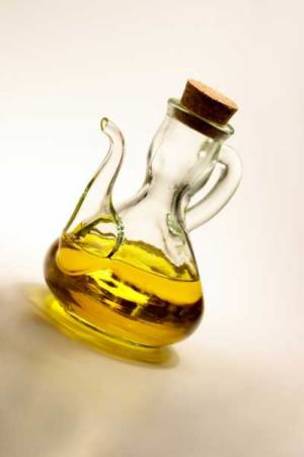


Italy is covered with olive trees, from the northern regions all the way down to Puglia and Sicily . The pressing of tree-ripened olives extracts tasty, monounsaturated oil that is good for cooking, as well as raw for salads. The flavor, color and fragrance of olive oils can vary greatly depending on distinctions such as growing region (oils from southern Italy tend to be fruitier) and the crop’s condition. Olive oils are graded according to the degree of acidity they contain.
The best oils are cold-pressed, a chemical-free process that involves only pressure, which produces a natural level of low acidity.
Extra virgin oil is only 1% acid and is the result of the first pressing of the olives. The olives are crushed with grinding stones or steel presses which separate the dry part of the olives (pomace) from water and oil by pressure and/or centrifugation spinning.
Evoo can range from a crystalline champagne color to greenish-golden and light green. It is the finest and most expensive. There are three categories of extra virgin olive oil:
* Mild – Light and buttery. Ideal for raw meats, pasta sauces, raw vegetables and fish.
* Fruity – Slightly stronger, it pairs well with grilled meats, pasta sauces, cooked vegetables and bruschetta.
* Spicy – Strong taste, perfect for rustic dishes.
Virgin olive oil is also first-press oil, with a slightly higher level of acidity (between 1 and 3%).
Fino olive oil is a blend of extra virgin olive oil and virgin oils.
Olive oil is a combination of refined olive oil and virgin or extra virgin olive oil. It is obtained from oils with defects or which have high acidity and have to undergo refining (an industrial process which renders it colorless, tasteless, and odorless) and are then mixed with small quantities of virgin or extra virgin olive oil.
Pomace olive oil is obtained by using chemical solvents to extract the oil remaining in the pomace, then refined and mixed with a small quantity of virgin olive oil.
Seed oil is extracted from the seeds by using chemical solvents and then refined.
Tasting Steps
The range of olive oils is so varied in flavor that sometimes it’s hard to choose what to buy. As with wine, it’s possible to taste the different oils in order to find the one that better suits personal preferences or purposes.
The president of Monini NA, Mr. Petrini, shares advice with us on how to taste and categorize olive oil.
* Pour the oil in a small glass and gently swirl in order to release all the various aromas.
* Inhale, first briefly, then deeply, trying to capture all the different aromas.
* Sip a small quantity of oil from the glass, trying to keep it in the front of your mouth between your lower lip and tightly shut teeth.
* Inhale, breathing first delicately then more vigorously so as to vaporize the oil in the oral cavity where the taste buds are.
* While trying to identify and catalogue all the different aromas and flavors, exhale from the nose so that the vaporized oil particles can reach the nasal membrane giving even more precise sensations.
* Once you have collected sufficient information you can expel the oil.
Positive Attributes
Pungent – Spicy aftertaste, intense in oils particularly rich in highly beneficial antioxidants.
Fruity – Taste perception typical of fresh and healthy olives.
Full body – A sensation of thickness or compactness typical of quality oil.
Bitter – Typical and intense in oils obtained from green olives.
Floral – Extremely pleasant sensation which recalls the penetrating perfume of flowers.
Woody – Sensation which recalls the fragrance of forest wood, typical of oils from Umbria .
Negative Attributes
Greasy – Leaving a very sticky palate and greasy aftertaste.
Rancid – Typical smell of deteriorated fat.
Vinegary – Smell perceived in oil obtained from badly stored olives in which the sugar has fermented thus forming alcohol or vinegar.
Earth – Typical smell of oil obtained from olives picked up from the ground.
Practical information
Always check the label to make certain the oil is estate pressed and bottled, and only buy olive oil in non-opaque glass, which will allow you to see the oil. It should be green, though not too brilliant a green. Be wary, on the other hand, of oil in cans that you cannot see, and also of very pale oils, or yellow oils. Pale oils have certainly been filtered and may have been cut with other less healthy oils, whereas deep yellow oils could well be old. Always check the expiration date that it should be two years after bottling.
Olive oil is an excellent source of omega-3 fatty acid, the acid one also finds in caught (as opposed to raised) oily fish such as salmon, which is important in preventing cardiovascular disease. In addition, olive oil reduces LDL cholesterol -- what sticks to the arteries -- and raises HDL cholesterol, which is instead beneficial and it is a powerful antioxidant.
Source URL: http://440468.6bgr9ubv.asia/magazine/focus/life-people/article/experience-world-olive-oil
Links
[1] http://440468.6bgr9ubv.asia/files/oliveoil1197304605jpg